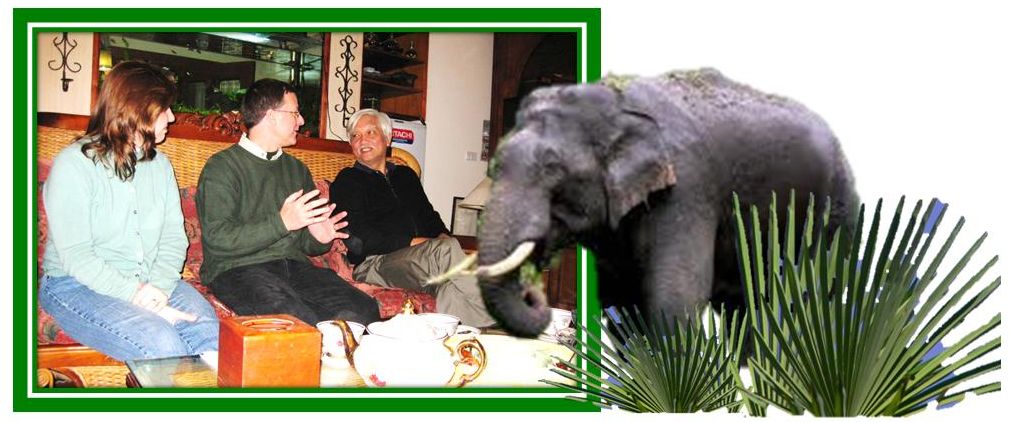Historian Duong Trung Quoc paid his Tet visit to HomestayHanoi. Knowing the host family since 1986, conversations & stories go round over a cup of hot tea in a cold winter afternoon,...
... and joined coincidentally with 2 American friends now teaching English in Hanoi University, Bob & Jenny. The longest story is about elephants in Vietnam. Mr. Quoc speaks Vietnamese, Bob, with 9 years learning Vietnamese, understood with a few words missing, and Jenny just kept guessing. The story below is written again in English for Bob & Jenny.
Elephants in Vietnam.
(To Jenny and Bob)

Before 1975, Daklak (a province in Tay Nguyen - the plateau in central of Vietnam) is the home of roughly 500 elephants domesticated and 300 in the wild. Now domesticated is 51 and in the wild, no one knows. And this white-hair man has spent his time in Tay Nguyen making up a profile for each of those 51 left, hoping that none of them would be in the fate like the last rhinoceros found dead in Vietnam in 2011. If these 51 elephants lived their lives of hard work today, none would be able to survive in 20 years’ time.
How do they live? Serving tourists who want to try Tarzan’s life, pulling timbers, and quite a good number of other local works. But hard work is not the end of the story, the question is whether these elephants can reproduce. And here is the story goes.
At mating season, the owner of the male elephant has to prepare some offerings to the owner of the female. The offerings are to feed the two elephants, then let them go to a good area in the forest to mate. If the mating is successful, 22 months later a baby elephant will be born to life.
But from the economic perspective, a successful mating will be a loss to both owners. Owner of the male loses the offerings, now in cash, and such investment is just for the male elephant to perform his masculine instinct. Owner of the female will have to cut down the work and cut short and shorter the working hours / days during her 22-month pregnancy and many months aftermath in rest. The baby elephant, 5 years before it can be used to do something, eats a lot, and neither of the owners of its parents wants to take care feeding the burden.
Also from the economic perspective, if the mating is not successful, the male will hook up the female to death with his tusks. And that is the total loss to the female’s owner.
And because of these reasons, the two owners decide at the mating season, they chain their elephants to the two separated big trees in the forest, leaving them with minimum food, and wait until the season is over. Years after years gone by, the elephants forget the desire to perform their “continuation of family line”.
Hard work days after days exhaust those 51 little poor elephant in the province. What they earn for the owners is not much, and depending on the number of tourists, which is now growing less and less in economic crisis. These elephants will die, one after another, because of hard work and no play, of sicknesses and diseases, of poor food and less food,… But again from the economic perspective, it is good: a living elephant is very costly to feed, a dead elephant is very worthy to sell its tusks, skin, hair and tail hair, … And it is this last economic perspective that puts to an end the life of an elephant in the neighboring province.
A living elephant is not under any registration. It doesn’t belong to Forest Administration, neither Agriculture, nor Tourism. It is domesticated so it is not in the conservation list of WWF.
In 20 years’ time, elephants, an animal that has been domesticated for 2 thousand years in Vietnam as seen with Hai Ba Trung and Ba Trieu, and Da Tuong, and King Quang Trung will disappear. And if a film is to be made about the national heroes, we have to hire one from our neighboring countries.